The American Gulag
Posted by By Akogun Akomolafe at 10 July, at 14 : 32 PM Print
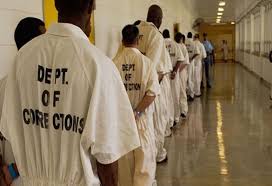
Warning: count(): Parameter must be an array or an object that implements Countable in /home/alaye/public_html/wp-content/themes/Video/single_blog.php on line 56
My Books on Amazon
- Africa: it shall be well: https://tinyurl.com/sn64ocd
- Africa: Destroyed by the gods: https://tinyurl.com/vglfk7w
- 18 African Fables & Moonlight Stories: https://tinyurl.com/s7qrp4p
Try and get your copy. And, please, help me share the links.
Kind regards,
Femi Akomolafe

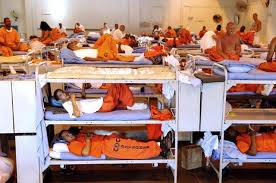
Then president-candidate Barack Obama drew the ire of conservative commentators when addressing a 2007 NAACP forum, said: “We have more work to do when more young black men languish in prison than attend colleges and universities across America.”
Obama was severely criticized for peddling false statistics. However, what the critics did not bother to add was that although the president’s figure was incorrect, they remain terribly abysmal, especially for a country that touts its justice system as the best in the world.
Ironically, the country that likes to hawk itself as the bastion of freedom and democracy, and is all over the world waging wars and toppling governments, in the name of freedom and human rights, is number one when it comes to the incarceration of citizens.
American politicians appear to derive some morbid joy in enacting laws and policies that sent more citizens to prison with the stiffest terms possible, than any other nation on earth.
The figures are not good: A US Department of Justice report published in 2006 said that the American justice system at some point held over 7.2 million people. The figures include those in prison, on probation, or on parole (people released from prison with restrictions).

It is the highest in the world. No other country even comes close. The United States has less than 4.4% of the world’s population but has 22% of the world’s prison population. The prisoners are held in some 102 federal prisons, 1,719 state prisons, 3,283 local jails, 2,259 juvenile correctional facilities, and 79 Indian Country jails. Some are held in military prisons, immigration detention facilities, civil commitment centers, and prisons in the U.S. territories like Guam.
Both Saudi Arabia at 178 per 100,000 and China at 218 prisoners per 100,000 fared better than the US. Even Russia at 577 per 100,000 fares a lot better than Uncle Sam. The figures for other economically-developed nations give even a starker overview: Japan is 59 per 100,000; Sweden is 78 per 100,000; Canada is 117 and Singapore is 273 per 100,000. India has four times the population of the US, but its prisoners number all of 380,000.
Another report says that about 12 million people care cycled through American justice systems each year. This includes figures for people serving terms for misdemeanors, those that are being held before trial, or those that are too poor to make bail. They also include those that have just been arrested and are yet to make bail.
The United States also beats the record in the proportion of women in jail. In most countries, the proportion of female inmates to the larger population is closer to one in twenty women, but women make up more than one-tenth of the whole US prison population.
It is however in the racial dimension of incarcerated inmates that the United States truly stands in a league of its own. The United States has a higher percent of imprisoned minorities than any country in the world. According to Michelle Alexander, the United States “imprisons a larger percentage of its black population than South Africa did at the height of apartheid.”
Although African-American constitute about 14 percent of the US population, they made up 60 percent of the American prison population. The number of African-Americans in US jails is more than the total combined prisoners of Argentina, Britain, Canada, France, Germany, and India.
2013 U. S. Census estimates put the number of black males in the United States at 18,508,926. In the same year, figures from the Bureau of Justice National Prisoner Statistics Program in 2013, 745,000 black male, the elderly and children included, are incarcerated in either local or federal prisons.
The number of Black men attending colleges is 1.4 million, so the 745,000 being locked up in jail is not small potatoes. Little wonder some talk of an epidemic of incarceration of black male.

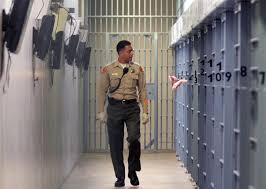
One of the factors that contributed to the swelling of prison figures was the introduction in the 1990s of the THREE-STRIKES LAW. The law provided for mandatory sentencing of offenders, thereby curtailing judges from using their discretion. The law also forces judges to impose longer sentences on non-violent offenses than they normally would do. For example, in many countries, the mandatory sentence for a first-time drug offender is 6 months jail term; in the US, it is five or ten years.
Another example, while a burglar in England will get about 5 months jail term, he looks up to 16 months in the United States.
To deter hardened criminals, many countries impose longer sentences on repeat offenders, but the US took this to new heights with mandatory 25-year imprisonment.
What is equally depressing is that American jails continue to resemble Soviet Gulag where petty criminals to political prisoners were housed in labour camps, to provide cheap labour for industries.
Studies found that whereas some western countries deliberately decided to hold down on imprisoning infringers and criminals, American politicians made conscious to maximize lengthy jail terms and increase the number of incarcerated citizens. This was also a deliberate and conscious effort undertaken to maximize the profits of the companies that run the prisons.
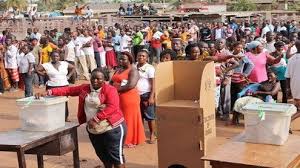
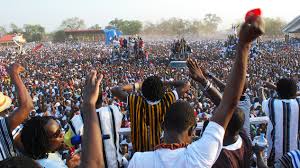
THE PRIVATISATION OF PRISON
It is difficult to imagine that prior to the 1980s, there were no private prisons in the US. The Reagan administration introduced the system whereby private companies were allowed to run what hitherto had been state’s facilities.
Of course, the impetus to make more money underlines private enterprise. The abdication by the state of its responsibility to correct and reform errant citizens, led to the urge to sentence more and more citizens, to lengthier jail terms in what has now become a for-profit industry.
A 2011 report by the American Civil Liberty Union (ACLU) claimed that: “the rise of the for-profit prison industry is a ‘major contributor’ to mass incarceration, along with bloated state budgets. Louisiana, for example, has the highest rate of incarceration in the world with the majority of its prisoners being housed in privatized, for-profit facilities. Such institutions could face bankruptcy without a steady influx of prisoners.”
A 2013 Bloomberg report states that in the past decade the number of inmates in for-profit prisons throughout the U.S. rose 44 percent.
The two largest corporations in the for-profit prison business, Corrections Corporation of America (CCA) and the GEO Group admitted that they spend substantial amounts of money to lobby federal and state governments. The relationship between some state and prison companies are very cozy indeed – some of them have contracts that guarantee at least 90 percent of prison beds to be filled. The contracts stipulated that the state must reimburse the prison company for the unused beds should these “lockup quotas” not met. Not bad at all.
The new cliquey arrangement, hugely beneficial to the companies, has been referred to as the Prison–industrial complex
The prison industry did not even bother to hide the fact that they are in a comfy relationship with state officials. CCA in a report to the SEC in 2010 admitted: “Our growth … depends on a number of factors we cannot control, including crime rates …[R]eductions in crime rates … could lead to reductions in arrests, convictions, and sentences requiring incarceration at correctional facilities.”
DRUG SENTENCING LAWS
Another contributing factor to the abnormally high prison figures was the decision by the Reagan administration to vigorously pursue a War on Drugs policy after the passage of the Anti-Drug Abuse Act in 1986. The law criminalizes drug abuse and turned what was hitherto a social cum mental-health issue into a law-and-order problem. After its passage, imprisonment for non-violent offenses rose dramatically. The provisions of the Act are truly punishing. Users of crack cocaine, the majority of them poor blacks, receive a mandatory five-year mandatory prison sentence.
The result was far more devastating than the benign cry of Nancy Reagan, “Just Say No to Drug,” exhortation.
Figures show that it has had a devastating effect on the lives of millions of Americans, and was especially ruthless on African-American lives. In 1985 about 41,000 people were in jail for drug offenses, by 2010, the figure shot up to 500,000. One estimate said that 31 million (about 1 in 10) Americans have been arrested and processed through the system on drug-related charges.
The figures for women, most of them poor, were also shattering. A 2003 report shows that 58% of all women in federal prisons were convicted of drug offenses. Again, there was racial bias as African-American and Latino women were disproportionately affected.
According to the American Civil Liberties Union, “Even when women have minimal or no involvement in the drug trade, they are increasingly caught in the ever-widening net cast by current drug laws, through provisions of the criminal law such as those involving conspiracy, accomplice liability, and constructive possession that expand criminal liability to reach partners, relatives, and bystanders.”
BLACKS AS TARGET FOR OUT OF CONTROL, TRIGGER-HAPPY COPS
It would be bad enough were lopsided incarceration in prisons to be the only problem that faces black people in the US, but they face a far more lethal peril from the guns of trigger-happy cops.
Again, the figures are truly appalling. No other police force in the world kills as many minorities as US police officers.
Sample horror stories:
In 2010 police officers stormed a house in Detroit looking for a fugitive, they did not find their man but managed to kill 7-year old Aiyana Stanley-Jones, who was asleep at her grandmother’s house.
16-year old Jessica Hernández, from Denver, allegedly struck a police officer with a stolen car, the officer and his colleague shot her dead. Jessica was shot 18 times.
Amadou Diallo was a 22-year-old immigrant from Guinea when, on February 4, 1999, four New York City Police Department plain-clothed officers fired a combined total of 41 shots, 19 of which struck Diallo, and killed him outside his apartment in New York.
On August 9, 2014, in Ferguson, Missouri, a suburb of St. Louis. Michael Brown, an 18-year-old black man, was killed by a 28-year old white police officer, Darren Wilson, who claimed the youngster tried to grab his gun.
Brown’s killing resulted in a massive nationwide protests.
In November 2014 in New York City, Officer Daniel Pantaleo choked the life out of Eric Garner.
On March 2 this year, a video went viral on the internet. It recorded the graphic film of a violent struggle between a homeless man and several officers in the Skid Row area of Los Angeles. In broad daylight and in the full view of several people, the officers fired five shots and killed the man. It later emerged that the man, whose nickname was Africa, had been living on the street for months. He wound up on the streets after he had spent 10 years in a mental health institution.
As usual, the Police came up with the same excuse they have used in so many similar incidents: the officers said they opened fire after the man tried to grab a gun from one of them.
It begs the question of why black males are always so suicidal that all they do was try to wrest guns from arresting police officers.
Some statistics show that in the US, Black males are 21 times more likely to be shot by police than white men in the same circumstances.
The startling figures show a wayward police force that acts as judges, juries, and executioners. And they do so execution-style – 41 bullets in the case of Amadou Diallo and 18 for Jessica Hernández.
According to recent accounts of justifiable homicide reported to the FBI, during a seven-year period ending in 2012, a white police officer killed a black person nearly two times a week in the United States. The report shows that 18% of the blacks killed during those seven years were under age 21 as compared to 8.7% of whites.
The saddest part is that a large percentage of the people gunned down by the police are mentally ill. A social/sociological problem was turned into a law and order issue, with the police acting as the ultimate decider.
The killing spree of US cops is unmatched among industrialized countries. While on average, US cops killed at least one person every day, British police did not record a single fatality last year, although they fired their guns three times. In 2011, when the FBI reported 404 justifiable law enforcement homicides in the U.S., the figure for Germany and Australia was six apiece.
FEDERAL AUTHORITIES STEPPED IN
The killing of Michael Brown and the nation-wide protest it generated prompted the US Department of Justice to launch an investigation.
The report released in early March revealed a startling racial bias in the justice system in Ferguson. The Federal investigators conducted hundreds of interviews, reviewed 35,000 pages of police records, and analyzed race data compiled for every police stop. A third of the citizens of Ferguson are white, but the crime statistics compiled in the city over the past two years suggested that only black folks broke the law.
We read from the report that Blacks accounted for 85 percent of traffic stops, 90 percent of tickets, and 93 percent of arrests. Blacks accounted for 95 percent of all arrests for jaywalking, a nebulously-defined crime, that is left to the discretion of the arresting office.
The Report also shows that from April to September last year, 95 percent of people kept at the city jail for more than two days were black and that 88 percent of people against whom police used excessive force were African-Americans


The Justice Department concluded that with such awful disparity, the Ferguson Police Department was routinely violating the constitutional rights of its black residents.
The report also revealed crude racism by city officials. In a November 2008 email, an official said Barack Obama would not be president long because “what black man holds a steady job for four years?” One email included a cartoon that depicted African-Americans as monkeys and another that described black women having abortions as a way to curb crime.
For African-Americans, the report did not say anything new. They know from experience that the criminal justice system in the land of the free works differently for blacks and whites.
Back in 1903, W.E.B DuBois wrote that “the problem of the Twentieth Century is the problem of the color line.”
Sadly, the color line continues to be the problem of the 21st century.
About the Author
Femi Akomolafe is a passionate Pan-Africanist. A columnist for the Accra-based Daily Dispatch newspaper and Correspondent for the New African magazine. Femi lives in both Europe and Africa and writes regularly on Africa-related issues for various newspapers and magazines.
Femi was the producer of the FOCUS ON AFRICANS TV Interview programme for the MultiTV Station.
He is also the CEO of Alaye Dot Biz Limited Dot Biz, a Kasoa-based Multimedia organisation that specialises in Audio and Video Production. He loves to shoot and edit video documentaries.
His highly-acclaimed books (“Africa: Destroyed by the gods,” “Africa: It shall be well,” “18 African Fables & Moonlight Stories” and “Ghana: Basic Facts + More”) are now available for sales at the following bookshops/offices:
- Freedom Bookshop, near Apollo Theatre, Accra.
- The Daily Dispatch Office, Labone – Accra
- WEB Dubois Pan-African Centre, Accra
- Ghana Writers Association office, PAWA House, Roman Ridge, Accra.
- African Kitchen in Amsterdam Bijlmer
Where to buy them online:
On Lulu Books:
18 African Fables & Moonlight Stories https://goo.gl/Skohtn
Ghana: Basic Facts + More: https://goo.gl/73ni99
Africa: Destroyed by the gods: https://goo.gl/HHmFfr
Africa: It shall be well: https://goo.gl/KIMcIm
Africa: it shall be well
on Kindle books: https://www.createspace.com/4820404
on Amazon books: http://goo.gl/QeFxbl
on Lulu Books: https://goo.gl/SQeoKD
Africa: Destroyed by the gods
on Kindle books: https://www.createspace.com/4811974
on Amazon books: http://goo.gl/1z97ND
on Lulu Books: http://goo.gl/KIMcIm
My Lulu Books page: http://www.lulu.com/spotlight/FemiAkomolafe
Get free promotional materials here:
- Africa: it shall be well: http://alaye.biz/africa-it-shall-be-well-introduction-in-pdf/
A FREE Chapter of ‘Africa: It shall be well’ could be downloaded here: http://alaye.biz/africa-it-shall-be-well-a-free-chapter/
- Africa: Destroyed by the gods (How religiosity destroyed Africa) http://alaye.biz/africa-destroyed-by-the-gods-introduction/
A FREE Chapter of ‘Africa: Destroyed by the gods’ could be downloaded here: http://alaye.biz/africa-destroyed-by-the-gods-free-chapter/
Contact Femi:
Femi’s Blog: www.alaye.biz/category/blog
Website: www.alaye.biz
Femi on Amazon https://www.amazon.com/author/femiakomolafe
Twitter: www.twitter.com/ekitiparapo
Facebook:https://www.facebook.com/alayeclearsound;
Gmail+: https://plus.google.com/112798710915807967908;
LinkedIn: www.linkedin.com/in/femiakomolafe
Email: fakomolafe@gmail.com
Kindly help me share the books’ links with your friends and, grin, please purchase your copies.
Comradely,
Femi Akomolafe




